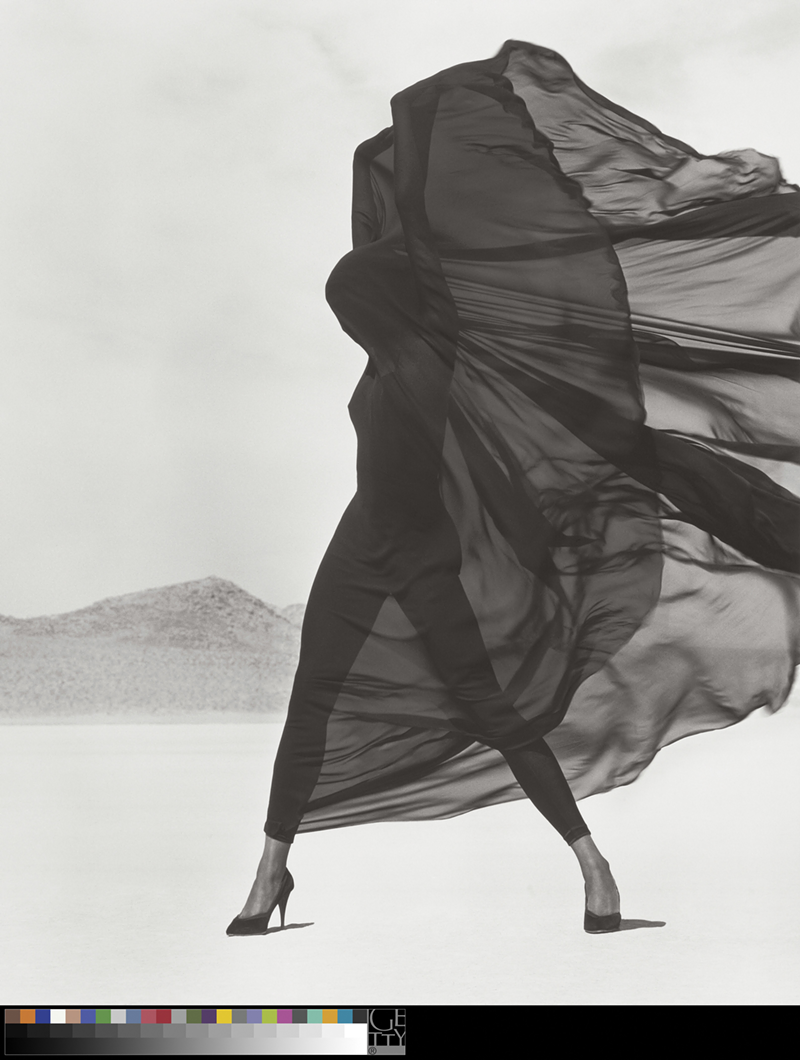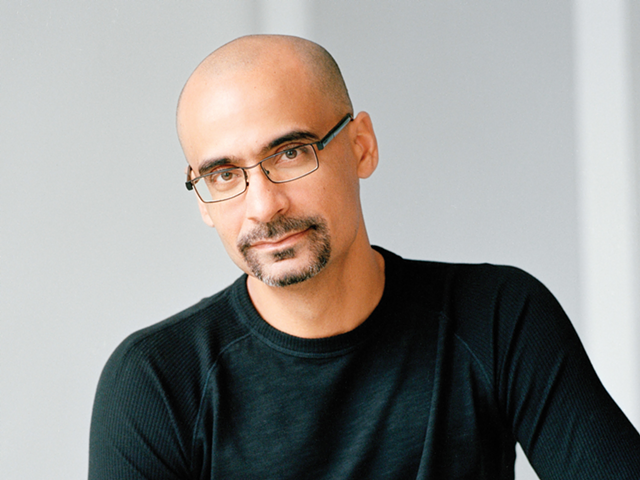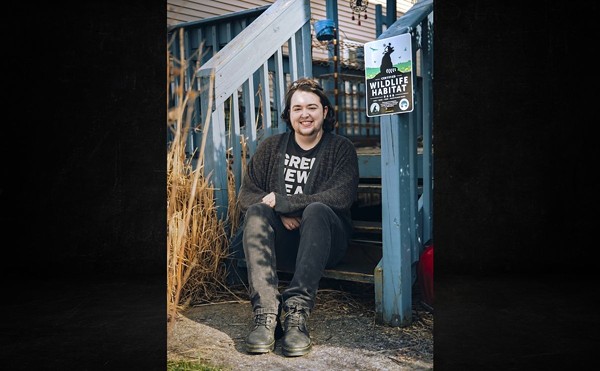I approach Herb Ritts: L.A. Style at the Cincinnati Art Museum (CAM) from what I assume is the front. The understated entrance off the Great Hall makes sense given the fashion photographer’s minimalist approach and preference for black-and-white. The cream exterior and the crisp sans-serif font on a black “awning” evoke a boutique. “Windows” of Cindy Crawford in Ferré and Naomi Campbell in Versace transport me to Rodeo Drive. This is L.A. style.
But immediately I encounter Madonna’s “Cherish” video and TV ads directed by Ritts. While successful, they’re not what the late photographer (1952-2002) was best known for. Pictures just inside on basic black columns are shots for designers, rather than the personal work expected in a museum show.
Thinking that I entered the wrong way, I descend to the lobby. The Doric columns guide my eyes up and down, connecting the sensual, statuesque figure of Crawford to Hiram Powers’ cold, hard sculpture of “Eve Disconsolate.” This is classical style.
So which entry is the front? Either, says Paul Martineau of Los Angeles’ Getty Museum, where the show debuted. There was a conscious effort to re-create the look of L.A.’s retail, says CAM chief curator James Crump, while the juxtaposition of a 19th century statue with 20th century images is both deliberate and a happy coincidence. Martineau just wanted the two styles to meet in the middle, to underscore how Ritts merged fine art and modern commerce by drawing upon the history of sculpture, painting and movies.
No matter where you enter, you’ll be struck by the beauty once inside. Yes, Ritts celebrated gorgeous bodies, but you’ll be seduced even further by the beauty of California sunlight.
“There’s an amazing honesty to his light,” says Ritts biographer Charles Churchward, former art director for Vanity Fair and Vogue. He also praises Ritts’ simple compositions. “Stylists like to put everything on, but Herb wanted clean.”
Shooting outdoors separated Ritts from studio-based New York peers. In addition to Malibu and El Mirage, Ritts used a rooftop studio. He established a fun, “organic” working environment, enabling him to cajole his subjects and develop an “anti-glamour” style of celebrity photography.
“He didn’t rely on star power to make pictures interesting,” Martineau says. Instead, you see the back of designer Jean Paul Gaultier’s head and the top of tennis star Boris Becker’s. His portraits arouse curiosity.
In 1977, friend Richard Gere, then unknown, posed for Ritts at a desert service station after getting a flat tire. Two years later the photos were published, launching both to fame. Largely self-taught, Ritts trusted his gut, and clients and subjects trusted him. So there’s Djimon Hounsou wearing a dead octopus, its tentacles draped like dreadlocks. In another Daliesque image, a model’s wet hair covers her face like a mask.
To critics who say Ritts copied ideas, Churchward responds that it’s impossible to be original anymore. There are too many images already out there, and too many deadlines in working every day. “You need a starting point” or artistic reference, Churchward says, “but you do it your way.”
It’s said Ritts “modernized” the nude even as he adapted classical poses. As a native of sun-worshipping L.A., he celebrated the body as a part of nature. Less provocative than Robert Mapplethorpe, Ritts made nudity “acceptable for Madison Avenue,” says Crump.
Perhaps influenced by Hollywood as well as nature, Ritts loved to capture motion. Leaping runners and dancers reflect Ritts’ optimism. But in 1995, after Ritts learned he was HIV-positive, he took a series of nude photos of choreographer Bill T. Jones, who’d lost a partner to AIDS. Head bowed and body bent, Jones’ movements are heavy with grief. Though a student of the past, Ritts described his work as “trying to get to one moment with one frame that eventually may speak for your generation.”
Crump believes that if working today, Ritts would have embraced color and even digital photography. Ten years after his death “is a great time to revisit analog,” Crump says, because Ritts’ efforts mean photography today “doesn’t have to prove itself so virulently.”
“Herb was the last classic great photographer of the 20th century,” Churchward concludes, simply because his art references that of centuries ago.
HERB RITTS: L.A. STYLE
continues through Dec. 30 at the Cincinnati Art Museum as part of FotoFocus. cincinnatiartmuseum.org
.





